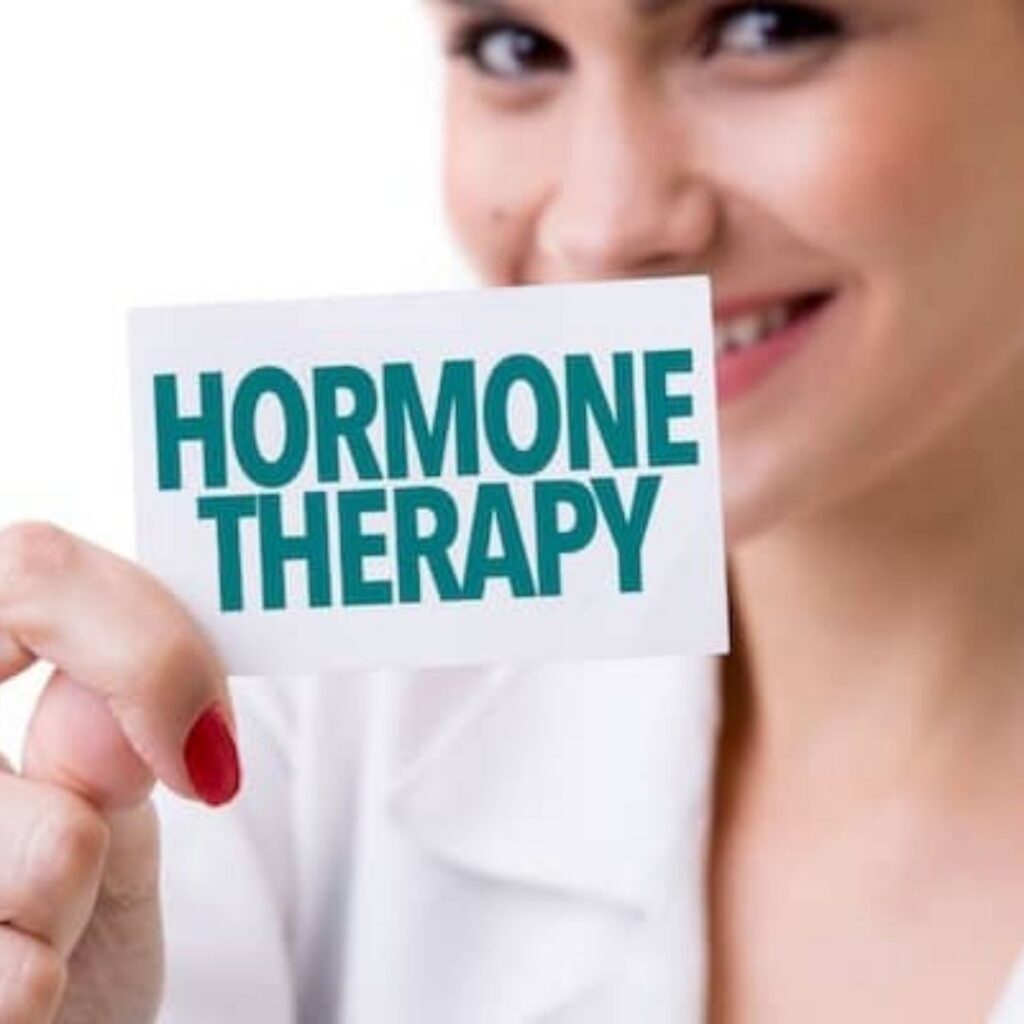
Hormone Replacement Therapy (HRT) for Menopause: What to Know
Hormone Replacement Therapy (HRT) is a common treatment for managing menopausal symptoms by restoring hormone levels that naturally decline during menopause. Whether for managing hot flashes, mood swings, or osteoporosis prevention, hormone therapy can provide substantial relief. Let’s explore HRT types, including estrogen therapy, testosterone supplementation, and combined hormone therapy, as well as available options for individuals navigating the menopausal transition.
1. Understanding Hormone Replacement Therapy (HRT) in Menopause
Hormone Replacement Therapy (HRT) is designed to supplement declining hormones like estrogen and progesterone in menopausal women, improving quality of life and reducing symptoms associated with low estrogen levels. HRT can include several formulations, such as estrogen-only therapy, combination estrogen-progesterone therapy, and more tailored hormone therapies.
Benefits of HRT:
- Relieves Hot Flashes: Estrogen replacement therapy effectively alleviates hot flashes, one of the most common menopausal symptoms.
- Maintains Bone Density: Estrogen and progesterone support bone health, reducing osteoporosis risk.
- Improves Mood Stability: HRT balances mood swings that are often related to hormonal changes.
- Promotes Heart Health: Combined hormone therapy can help with heart health during postmenopausal years.
2. Types of Hormone Replacement Therapy
Different HRT options provide various benefits depending on the individual’s needs, from localized estrogen therapies to systemic hormone therapies. Here’s a breakdown of available options:
| Type | Description | Purpose |
|---|---|---|
| Estrogen Replacement Therapy | Estrogen-only HRT, used for women post-hysterectomy | Manages symptoms like hot flashes |
| Combined Hormone Therapy | Mix of estrogen and progestin | Reduces uterine cancer risk in women with a uterus |
| Testosterone Replacement | Adds testosterone to address low libido or energy | Helps with sex drive and vitality |
| Bioidentical Hormones | Plant-derived, chemically similar to human hormones | Offers an alternative to synthetic hormones |
3. Menopausal Hormone Therapy Options
The best menopausal hormone therapy approach depends on individual needs, whether it’s systemic estrogen therapy for overall symptoms or local estrogen therapy for targeted relief. Systemic estrogen therapies, such as oral estrogen or transdermal estrogen patches, release hormones into the bloodstream to manage hot flashes and bone density. In contrast, local estrogen therapies (like vaginal hormone therapy) target specific symptoms such as vaginal dryness without affecting the entire body.
Hormone Administration Forms
| Form | Examples | Usage |
|---|---|---|
| Estrogen Pills | Oral estrogen or synthetic conjugated estrogens | Systemic symptom relief |
| Transdermal Estrogen Patches | Provides steady estrogen release | For those preferring non-oral hormone therapy |
| Vaginal Estrogen Creams/Tablets | Topical estrogen for localized symptoms | For vaginal dryness or irritation |
Each form of hormone therapy has unique benefits, and working closely with a healthcare provider is essential to find the right fit.
4. Estrogen Therapy and Combination HRT
Estrogen therapies focus on addressing estrogen deficiency and estrogen-sensitive symptoms like hot flashes, mood changes, and osteoporosis risk. Combination estrogen-progesterone therapy is commonly recommended for women with a uterus to prevent uterine cancer, which can be a risk with estrogen-only therapy. The decision between estrogen-only HRT and combined hormone therapy depends on individual health profiles and hormone sensitivity.
- Estrogen-Only HRT: Beneficial for individuals who have had a hysterectomy and are at lower cancer risk.
- Combined HRT: Reduces the risk of endometrial cancer, supporting safety for women with a uterus.
5. Testosterone Therapy and Androgen Therapies
In addition to estrogen therapy, testosterone replacement can be a powerful supplement for women who experience decreased libido or energy. Testosterone is typically administered as transdermal testosterone patches or compounded testosterone gel, helping to elevate testosterone levels safely. Androgen therapies can also be part of a broader hormone therapy regimen, particularly for those who require a boost in total testosterone levels.
Types of Testosterone Therapy
| Type | Description | Purpose |
|---|---|---|
| Compounded Testosterone Gel | Custom dose to fit individual needs | Boosts libido and energy |
| Transdermal Testosterone Patches | Convenient patch for slow hormone release | Ensures consistent testosterone delivery |
6. Synthetic Hormones vs. Bioidentical Hormones
There are different hormone formulations within HRT, including synthetic hormones and bioidentical hormones. Synthetic hormones are lab-produced, whereas bioidentical hormones are plant-derived and chemically identical to natural hormones. Many women prefer bioidentical hormones for perceived natural compatibility with the body, though both types have been shown to be effective.
| Hormone Type | Source | Benefits |
|---|---|---|
| Synthetic Hormones | Lab-produced | Consistent dosing |
| Bioidentical Hormones | Plant-based | Mimics natural hormone structure |
The choice between bioidentical and synthetic hormones can depend on personal preference and treatment goals, as both offer effective relief.
7. Special Considerations in HRT: Estrogen Treatments and Risks
Estrogen therapy provides effective relief, but it’s essential to use the right estrogen dosages to avoid health risks. High-dose estrogen is generally avoided, especially for women at risk of hormone-sensitive cancers. Instead, lower estrogen dosages or local estrogen treatments are often recommended for safety, especially in treating conditions like estrogen-receptor-positive breast cancer.
- Selective Estrogen Receptor Modulators (SERMs): These drugs, like tamoxifen, act on estrogen receptors selectively, reducing cancer risk.
- Conjugated Estrogens: Often used in combination HRT, providing both estrogen and progestin effects.
8. Personalized Hormone Therapy Plans
The right treatment plan for hormone therapy is highly individual, and hormonal therapy adjustments are often necessary based on a person’s evolving needs and hormone levels. Hormone levels may be monitored periodically to ensure the chosen therapy remains effective and safe.
| Hormone Therapy Type | Best For | Monitoring |
|---|---|---|
| Systemic Estrogen Therapy | Hot flashes, mood changes | Regular estrogen level checks |
| Local Estrogen Therapy | Vaginal dryness, irritation | Minimal monitoring needed |
| Testosterone Supplementation | Low libido, energy | Total testosterone levels monitoring |
9. FAQs: Hormone Replacement Therapy
Is hormone therapy safe for postmenopausal women?
Yes, when closely monitored. Postmenopausal hormone therapy has been shown to be safe and effective for many, though certain individuals (e.g., with estrogen-sensitive cancers) may need alternative treatments.
What are the risks of estrogen-only therapy?
Estrogen-only therapy can increase uterine cancer risk in women with a uterus. Combined hormone therapy or selective estrogen receptor modulators are often recommended for safer use.
How soon can I feel results with HRT?
Many women experience symptom relief within weeks, although it may take longer to notice bone density improvements or other long-term benefits.
Conclusion: Choosing the Right HRT
Hormone replacement therapy can be a powerful tool for managing menopausal symptoms, providing relief from discomfort, supporting bone health, and stabilizing mood. Whether through estrogen-only treatments, combined hormone therapy, or testosterone therapy, each HRT plan can be tailored to meet individual needs. Consult with a healthcare provider to determine the safest, most effective therapy for your menopausal journey, ensuring an approach that aligns with your specific health profile.
For more personalized assistance, reach out to Dr. Arnaldo Lopez at Magic City Obstetrics and Gynecology in Kissimmee, FL, to explore HRT options tailored to your needs. Contact Information: 407-703-2800; Location: 3200 Hillsdale Ln, Kissimmee, FL 34741.

